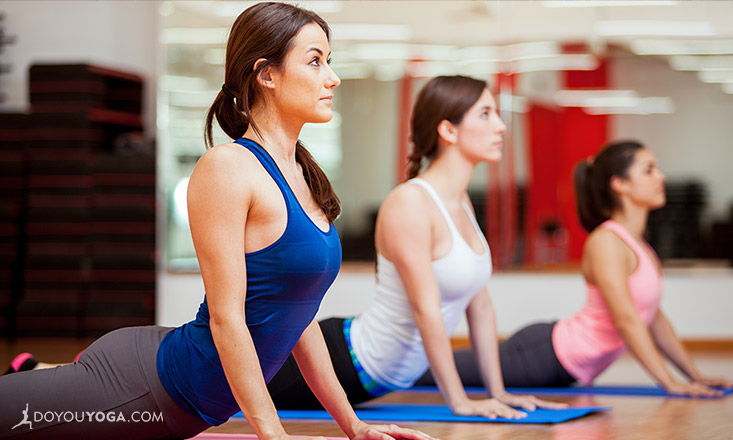While yoga videos are convenient and inexpensive, it is ideal for beginners to learn face-to-face from an instructor. This will ensure that you are doing the poses accurately, to avoid injury and achieve maximum benefit.
Once you have learned the correct alignment, you can certainly take your asana practice home, but there is also something special about taking class in a group setting. There is a wonderful energy that is generated from practicing with others, a synergy that is created as the group collectively shares in the experience.
Finding a Teacher and Studio
Start by researching studios in your area and explore their class offerings. Educate yourself on the various styles of yoga that are offered, and pick a class that piques your interest. You can try several different styles and then decide which you like best.
Obviously if you are new to yoga, you will want to chose an “All Levels”, “Beginners” or “Basics” class. In an “All Levels” class you will find both beginning and intermediate yogis, and the instructor should offer modifications and variations of poses in graduating degrees of difficulty.
It is a good idea to try out a few different teachers, and even different studios until you find the right fit. Look for one whose atmosphere suits you best, one whose energy resonates with you. It should be a place where you feel a sense of serenity, comfort and ease. Your studio will be your yoga home, so take your time and choose wisely.
Basic Yoga Poses
To help you prepare for your first class, here are a few basic poses that you can familiarize yourself with beforehand, to help you feel a little more comfortable once you step into the studio.
Downward-Facing Dog (Adho Mukha Svanasana)

Feel the sensation of the thighs pressing back as the heels reach for the earth. Lift the low belly. Gaze toward your knees with your head between your arms.
Plank (Phalakasana)

Chaturanga (Chaturanga Dandasana)

Beginners often lack the core strength to lower through chaturanga while keeping the body parallel to the floor, so you are welcome to first drop your knees to the earth first, then lower the torso down and straighten the legs back.
Your core is key here, so focus on drawing your belly toward the spine and maintaining that lift in the abdominals. The legs should be very active, firming the thighs.
Upward-Facing Dog (Urdhva Mukha Svanasana)

Simultaneously un-tuck your toes, pointing them straight back, and press the tops of the feet down as you extend the legs behind you. Keep the thighs and calves firm, the legs fully stretched and lifted off of the earth. Pull the pelvis forward. Feel your heart center lift as you spread your chest.
In a Vinyasa Flow class, you may here the instructor tell students to “take a vinyasa”. This simply means to flow from Downward Dog, to Plank, to Chaturanga, to Upward Dog, and back to Downward Dog. Vinyasa, literally translated from Sanskrit means, “connection.” This series of postures connects movement and breath, as well as being the constant connecting component in a Vinyasa Flow sequence.
Familiarity with these basic poses will help you confidently enter your first class. Knowledge, strength, and flexibility will come with practice.
Remember that every advanced yogi was once a beginner, too.The most important thing to have, however, is the desire to learn, to grow, and to transform, mind and body.


